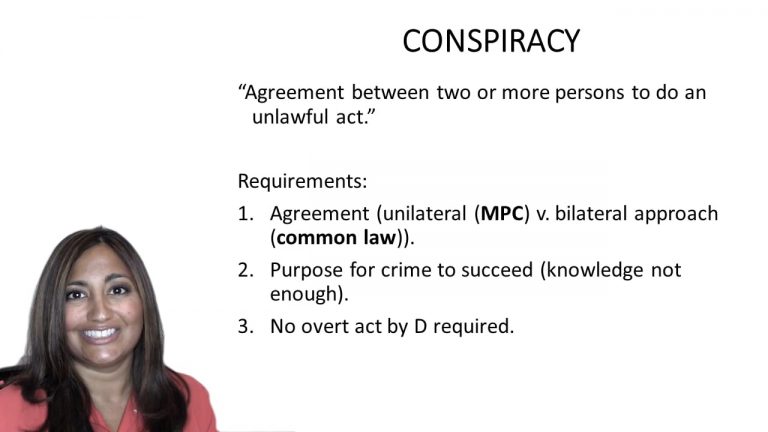SmartBrief
Confirm favorite deletion?
Criminal Law Keyed to Ohlin
United States v. Shabani
Citation:
513 U.S. 10 (1994)Facts
According to an indictment, the defendant participated in a drug distribution scheme with his girlfriend and other associates. He allegedly was the supplier of the drugs, which he arranged to be smuggled from California to Alaska. An undercover agent purchased cocaine from distributors involved in the conspiracy.
The defendant was charged with conspiracy to distribute cocaine in violation of 21 U.S.C. § 846. He filed a motion to dismiss arguing that he did not commit an overt act in furtherance of the conspiracy. The District Court denied it, holding that proof of an overt act is not required to establish a violation. The Court of Appeals reversed the District Court. He is now in the Supreme Court of the United States.
Only StudyBuddy Pro offers the complete Case Brief Anatomy*
Access the most important case brief elements for optimal case understanding.
*Case Brief Anatomy includes: Brief Prologue, Complete Case Brief, Brief Epilogue
- The Brief Prologue provides necessary case brief introductory information and includes:
Topic:
Identifies the topic of law and where this case fits within your course outline.Parties:
Identifies the cast of characters involved in the case.Procedural Posture & History:
Shares the case history with how lower courts have ruled on the matter.Case Key Terms, Acts, Doctrines, etc.:
A case specific Legal Term Dictionary.Case Doctrines, Acts, Statutes, Amendments and Treatises:
Identifies and Defines Legal Authority used in this case.
- The Case Brief is the complete case summarized and authored in the traditional Law School I.R.A.C. format. The Pro case brief includes:
Brief Facts:
A Synopsis of the Facts of the case.Rule of Law:
Identifies the Legal Principle the Court used in deciding the case.Facts:
What are the factual circumstances that gave rise to the civil or criminal case? What is the relationship of the Parties that are involved in the case.Issue(s):
Lists the Questions of Law that are raised by the Facts of the case.Holding:
Shares the Court's answer to the legal questions raised in the issue.Concurring / Dissenting Opinions:
Includes valuable concurring or dissenting opinions and their key points.Reasoning and Analysis:
Identifies the chain of argument(s) which led the judges to rule as they did.
- The Brief Prologue closes the case brief with important forward-looking discussion and includes:
Policy:
Identifies the Policy if any that has been established by the case.Court Direction:
Shares where the Court went from here for this case.
Topic Resources
Topic Refresher Course

 10m 19s
10m 19s